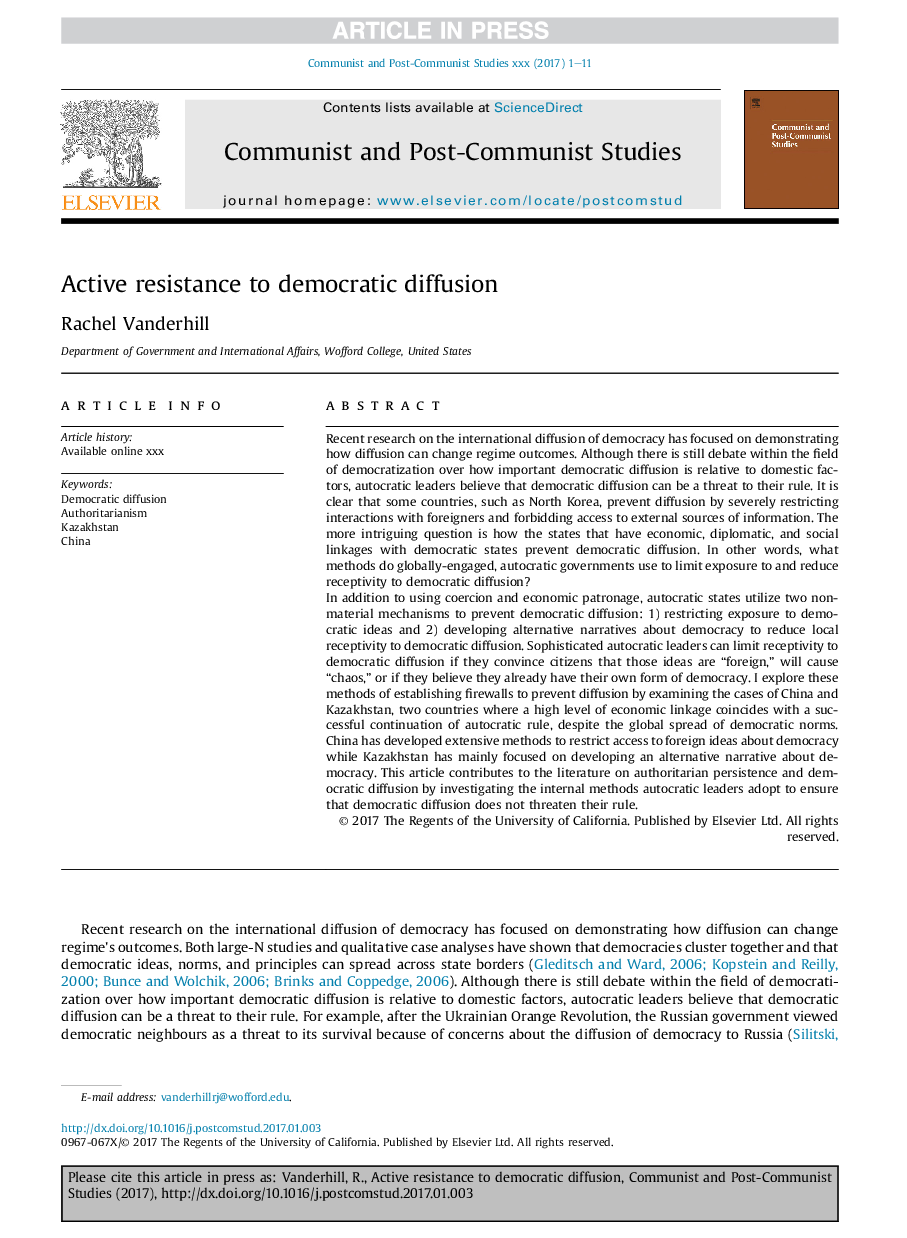| Article ID | Journal | Published Year | Pages | File Type |
|---|---|---|---|---|
| 5114278 | Communist and Post-Communist Studies | 2017 | 11 Pages |
Abstract
In addition to using coercion and economic patronage, autocratic states utilize two non-material mechanisms to prevent democratic diffusion: 1) restricting exposure to democratic ideas and 2) developing alternative narratives about democracy to reduce local receptivity to democratic diffusion. Sophisticated autocratic leaders can limit receptivity to democratic diffusion if they convince citizens that those ideas are “foreign,” will cause “chaos,” or if they believe they already have their own form of democracy. I explore these methods of establishing firewalls to prevent diffusion by examining the cases of China and Kazakhstan, two countries where a high level of economic linkage coincides with a successful continuation of autocratic rule, despite the global spread of democratic norms. China has developed extensive methods to restrict access to foreign ideas about democracy while Kazakhstan has mainly focused on developing an alternative narrative about democracy. This article contributes to the literature on authoritarian persistence and democratic diffusion by investigating the internal methods autocratic leaders adopt to ensure that democratic diffusion does not threaten their rule.
Keywords
Related Topics
Social Sciences and Humanities
Social Sciences
Development
Authors
Rachel Vanderhill,
